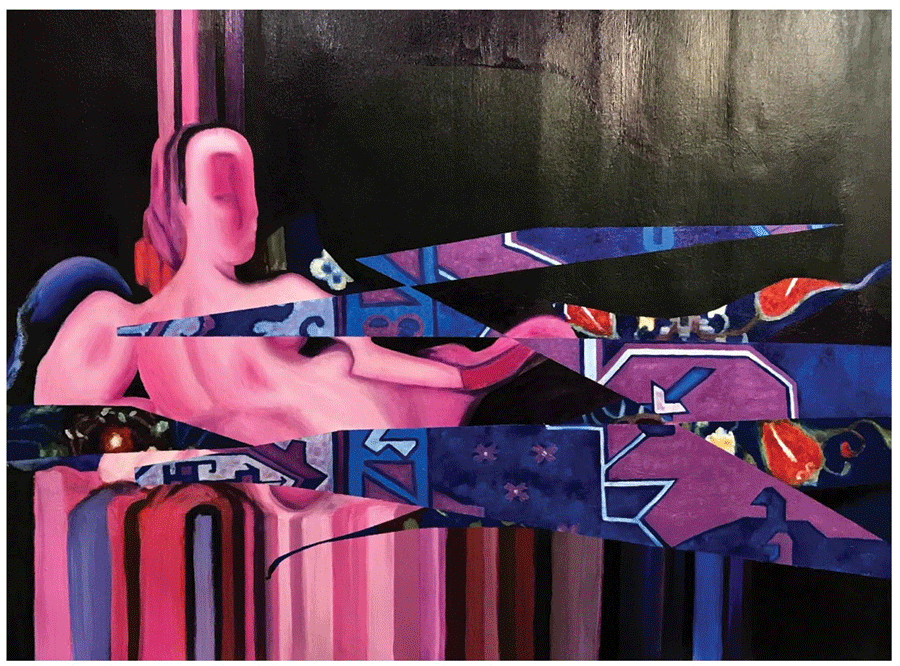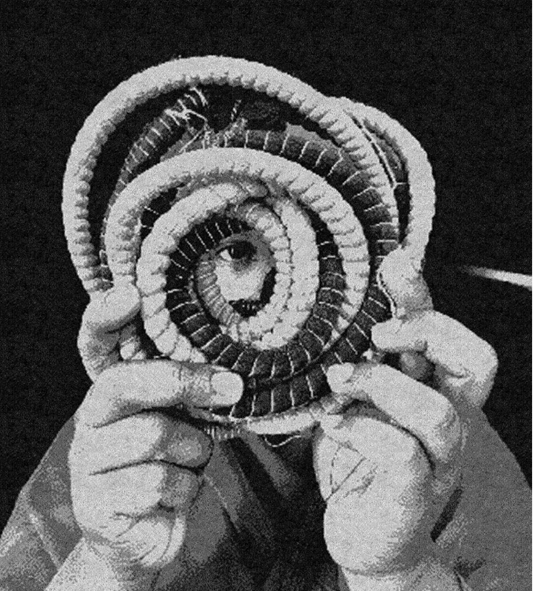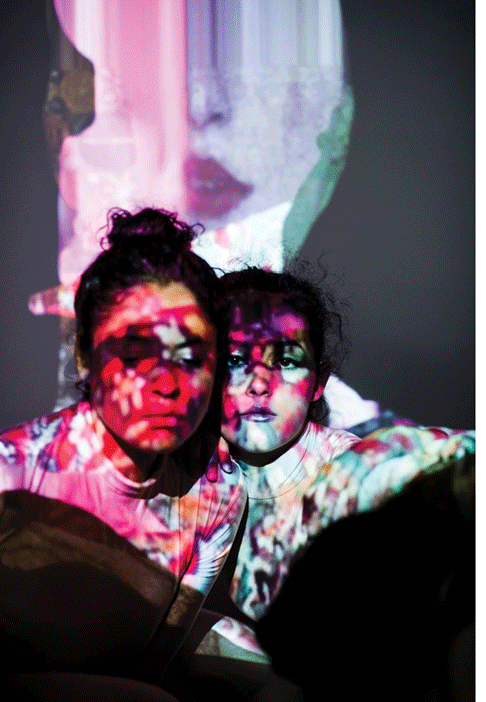Art review: Qinza Najm
By Nusrat Khawaja | Art Line | Published 7 years ago

Odalisque with Pink and Blue Rug.
Qinza Najm’s vision involves a profound assault on the patriarchal system. And her weapon is her imagination. It would be fair to say that Qinza Najm is an explorer in constant search of what lies beyond boundaries. Her search is dominated by feminist existentialism; self-awareness at an individual level as a way to counter unjust cultural norms. This prolific New York-based artist held her first solo show in Pakistan at Chawkandi Gallery. The show – And All Around Her There Was a Frightening Silence – was curated by Brooke Lynn McGowan and earlier shown in New York.
Qinza examines the subjective realities of womanhood within the spectrum of cultural norms and expectations. There is an uneasy dynamic between the idea of exploitation and the idea of self-empowerment. The narratives embedded in her art share an emancipatory trajectory. Self-awareness and self-actualisation empowers individuals to transcend the restrictions of convention. Her work is discursive and abounds in cultural references. These “borrowed” references create layers of meaning within the work. For example, the title of the show has been taken from a line in Manto’s story ‘Hatak [The Insult].’ Like the concept of ‘shakkei’ or borrowed scenery in Japanese gardening, which allows the surrounding views to be incorporated into garden design, so too does Qinza’s scheme of references add layers of depth to specific works of art.
The carpet is a prominent element in the show. Its materiality and texture stand in as a metaphor for the body, which is the locus of thoughts and experiences. The carpet motif has been developed by Qinza in two different ways. There are works created from carpeting itself and there is a set of oil paintings.

Gaze from veil
The woven carpets are designed by Qinza as wall hangings. They have been woven by women in Lahore under her supervision. Their black-and-white boldness underscores the look with which the woven faces gaze out directly at the viewer.
The paintings are executed with fine strokes creating a smooth surface. The background is black and on it Qinza has transcribed a template of herself as posed during a performance. Within the template of this “mother” outline, are distorted women’s figures, partial faces and segments of floral patterns of Persian carpets. The women in the paintings, although only partially visible, are identifiable as iconic characters from key works in western classical art. There is Boticelli’s ‘Venus,’ Vermeer’s ‘Girl with the Pearl Earring,’ Ingres’ ‘Odalisque’ and Picasso’s ‘Portraits of Dora Maar.’
An uneasy hybridity of East and West is created by these paintings. Qinza is using unease as a method of subversion. The distortion is a challenge to the status quo which is represented by the passive modelling of women through the centuries.
Together, both the carpet sets comprise a series called ‘Stretch(ed).’ This deliberately ambiguous title refers to the literal stretching of the fibres of the carpet while it is being woven and, metaphorically to the stretching of awareness and the broadening of one’s consciousness. The greatest distortion is towards the head, which changes into vertical bands of paint. This is a clue to yet another dimension of consciousness which, besides gender emancipation, includes spirituality in its embrace.
Qinza Najm is an energetic artist as manifested by the various media in which she expresses her thematic concerns. Besides the carpets and the paintings, the show included a video installation and a live performance.

Tabdeeli, Performance art.
The video comprised recordings of Pakistani women who spoke of challenges they confronted as victims of patriarchal domination. Each character was asked to select an object that exemplified their memory of this particular challenge. Their faces were filmed in close-ups and the recording was projected onto a woven charpai on which a white sheet and embroidered pillow case were placed.
Qinza inducted four students from NAPA for the live performance. This was an effective and visually enthralling piece of theatre. The actors wore body sacks made of stretchy (again, the theme of stretching…) translucent fabric. They entered in dim light, writhing to the rhythms of a dramatic musical score composed by Qinza. Eventually they escaped from the restrictions of the body sacks in a flood of colourful lights that replaced the darkness.
And All Around Her There was a Frightening Silence is a powerful show with its multi-media displays, each of which has multi-textural connotations. The art demands discourse with the viewer, who must deconstruct and connect the layered associations inherent to the works. The frightening silence begins to dissipate with the disintegration of patriarchal narratives.


